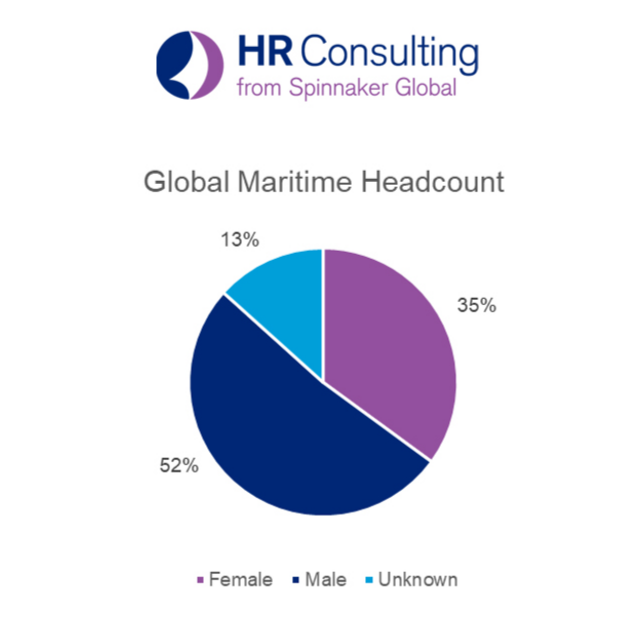According to Spinnaker’s Maritime HR Association data, the proportion of male and female employees within the global shore-based workforce remained largely stable in 2020 – 56% male, 41% female, and 3% unknown.
Some of the key findings from the recently published analysis on gender diversity in maritime are listed below:
Work location
In countries with a large membership presence (500+ employees) only the UK and the Philippines are found to employ more women than men overall, at 53% and 67% of the workforce respectively – the result of a high number of customer service and crewing roles in these locations.
Nationality
Filipino and Singaporean employees are most likely to be female. Filipino women are typically found working in the Philippines, in crewing and finance roles. The types of roles occupied by Singaporean females are much more varied, but there is still a strong Finance focus and they too are predominantly found working in their home country of Singapore.
Seniority & specialisms
The benefits of diversity come from employing women at all levels of the hierarchy and across all job functions, and this is where the industry challenges lie. 95% of all admin roles are occupied by women, compared to just 5% of maritime executive leadership team roles. The job families where women are less well represented are those that drive higher market salaries too; for example technical & marine, chartering & freight trading and shipbroking
Gender pay gap
It is a combination of all the above factors that drives the gender pay gap. High level analysis for key locations revealed Denmark as having the lowest gender pay gap – at 30%). Find out more about the recently published UK maritime pay gap here.
Unfortunately, the impact of COVID is likely to worsen the gender diversity landscape – with women across all industries expected to be more likely to face redundancy or experience changes to roles or hours. However, there are also plenty of opportunities to capitalise on the remote and flexible working practices that have been adopted over these past 12 months. It’s a perfect time to promote improved work life balance and shared family responsibilities for all employees. With less onus on visibility and more focus on results, this is a chance to drive productivity in a way that works for the modern, mobile workforce.
Ultimately, diversity initiatives need to become the norm and embedded within company culture. Whilst that may feel a long way of for some, small steps now will reap great returns in the future. If you would like to compare how your business is doing against the wider industry, please get in touch: [email protected].



